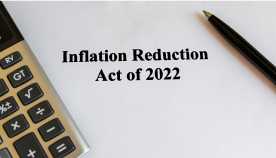AARP Eye Center

Strategies to avoid heatstroke, other illness on sweltering days
As summer bears down, triple-digit temperatures in some parts of the country are no longer an anomaly — they’re normal.
Southern states are grappling with a relentless heat wave, with temperatures topping triple digits. These high temps have arrived much earlier in the season than normal, and millions of people are living under heat alerts.
Make the most of your AARP experience in just a few minutes! Select your preferences, add a second member for free, activate AARP Rewards, browse through our newsletters, download our app, and more.
But even in areas that don’t often see 100 degrees or above, weather is getting hotter and stickier. As temperatures rise, people need to be more careful than ever to stay cool and avoid overheating and illness, particularly as they get older, medical experts say.
“As you age you don’t notice the heat anymore,” says Charles Maddow, M.D., the director of emergency geriatrics at McGovern Medical School at UTHealth in Houston. Older bodies are not as hydrated and don’t sweat as much, making it more difficult for them to cool down, he explains.
Heat is the number 1 weather-related killer, according to the Centers for Disease Control and Prevention. The CDC says that on average, about 618 people in the United States are killed by extreme heat every year. The National Weather Service recently forecasted heat indexes near Houston and San Antonio as high as 120 degrees.
So what does all this hot air look like up close? In Baton Rouge, Louisiana, where residents are under an excessive heat warning, Denise Holladay, 55, typically vacuums and does laundry in the evening only, when the sun isn’t beating down on her home. During the hottest months, she meets her husband, who works nights, at their gym at 1 a.m. to work out, which saves her from having to get into a hot car.
“I've always been a bit of a night owl,” she says. “However, as I’ve gotten older and the summers have progressively become hotter and longer, more of my life is lived in the late hours.”
Preventing heatstroke and dehydration
Spiking temperatures bring an increased risk of heat-related illnesses like dehydration and heatstroke.
The risk of illness from hot weather is particularly high for those over 65, according to the Centers for Disease Control and Prevention, which found that 36 percent of heat-related deaths in the U.S. were in that age category. As people age, bodies don't adjust as well to sudden changes in temperature, and prescription medications and chronic illnesses can affect a response to heat.
"Heat can really be threatening to older adults,” says Christine E. Kistler, a physician in the Department of Family Medicine and the Division of Geriatric Medicine at the University of North Carolina School of Medicine. “The heat you might have been able to take in your 30s, you're not physiologically able to cope with in your 80s.”
Existing health conditions like diabetes, a history of heart disease and high blood pressure — more common in older adults — can also make people more susceptible to heat-related illnesses, she says. Plus, diuretics, sedatives, beta blockers and other heart and high blood pressure medicines may make it more difficult for people to cool themselves. Check with your doctor about whether medications you take could contribute to overheating.
What to watch out for
Heatstroke and heat exhaustion top the list and can be quite dangerous, Kistler says. If you start to feel sluggish, light-headed, nauseated or dizzy after being outside, listen to your body. Get into the shade or seek out air-conditioned areas. A cool shower or pouring cold water over wrists, ankles and the back of the neck can also help get body temperature down, Kistler says. And if you’re outside with someone who suddenly turns pale on a hot day, they could be experiencing heat exhaustion. Get them into a cold shower quickly.
If you still feel unwell after cooling down and hydrating, seek medical treatment.
The best thing to do if you know you’ll be out in hot weather is to prepare behaviorally, Maddow says. Wear thin layers of light-colored clothing that can be easily shed. If you’re outside, set a timer for 15 minutes to remind you to seek a shady or air-conditioned spot, he says.
Dehydration is a serious problem for older people. It’s important to keep up fluid intake in hot weather, says Krystal Culler, the founder of Virtual Brain Health Center in Poland, Ohio, and a behavioral health expert who has worked with community-based senior programs and adult day programs. Culler said behavioral strategies such as drinking a full cup of water with vitamins or medication, instead of a sip, can encourage people to drink more fluids. “Adding it into something that is already a part of your daily routine helps,” she says.
The CDC's guide for protecting older adults in the heat notes that people shouldn't wait until they feel thirsty to start drinking fluids. The National Academy of Medicine suggests men drink 15.5 cups of fluid per day and women drink about 11.5 cups daily.
Culler says she has found that older people tend to drink more if they use small cups that are refilled often, rather than giant “big gulp” style containers, which can look overwhelming.
Also, avoid alcohol and caffeine, as they can be dehydrating.
Avoiding sunburn goes beyond making sure you aren't pink and peeling to the point of discomfort, Kistler says. Older people have an increased risk of skin cancer, so wear sunscreen with broad spectrum protection, a broad-brimmed hat and sunglasses.
Heat rash, that prickly, itchy skin condition, can develop if you're out in the sun. Wearing light-colored, loose clothing made of breathable fabrics can help keep you cool and prevent rashes. Look for clothing made from cotton, linen or those specifically designed to wick moisture away from the skin, she says. Avoid polyester, or any fabric that makes you warm.
Cooling strategies
Stay inside on the hottest days. Seek out air-conditioning, and make rules for yourself about not going out between the hours of 10 am and 6 pm, for example, to spare your body the stress of extreme heat.
“No one would go out in a blizzard,” Kistler says. “People should think of really hot days like a sun blizzard and stay inside.”
If you don't have air conditioning at home, some communities offer cooling centers during heat waves. Or consider spending the day at the movies or the mall. There are also low-income energy assistance programs if you're having trouble paying your electric bill. Contact the nearest office for the Low-Income Home Energy Assistance Program (LIHEAP) for more information.
Take a dip. That could mean going for a swim or a float in a pool or a lake, but it can also mean taking a cool shower or running through a backyard sprinkler (with the grandkids or not). If you like exercising outside, a swim might be the way to go.
Seek out shade. Take a walk in the woods instead of on a path in full sun, or do some gardening under a tree or in a bathing suit with a sprinkler cooling you. If you need to go out, shift your timing to early morning or evening, when the sun isn’t as strong and more shade is available.
Get more water. Get in the habit of sipping regularly. As people age, their ability to sense thirst wanes. That’s why it’s important to drink liquids often in hot weather, Maddow says. Flavoring water with fruits and vegetables like cucumber can make it more inviting, Culler says, and some reusable water bottles include a core to load with lemons, apples or strawberries. Some fruits have a high water content, so choose watermelon or grapes for snacking.
AARP Home and Family editor Michelle R. Davis contributed to this story.
Editor's Note: This article was originally published on June 25, 2020, and has been updated with new information.
Renée Bacher is a contributing writer who covers health, pets and lifestyle. She has also written for The New York Times Magazine, The Washington Post Magazine and Parade.























































